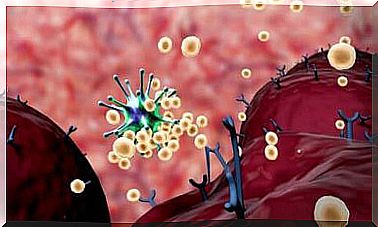Step-by-step Approach To Smoking Cessation

More than 1.3 million people are addicted to smoking, according to the latest WHO report on global trends in tobacco use. Health intervention in smoking cessation has therefore become the standard of preventive measures.
WHO data shows that more than 8 million people die each year as a result of tobacco use. This figure makes smoking the leading cause of preventable death and disease worldwide. Health intervention is therefore crucial to ensure that people stop smoking.
For such an intervention to be effective, one must be able to break the physical and psychological dependence on tobacco. It is also necessary to unlearn the automatism that accompanies smoking.
The influence of the social environment on a person’s consumption must also be modulated. To do this , the first step is to recognize the phase of the quitting process that the smoker is in.
The phases of quitting smoking

When we talk about smoking cessation, we need to focus on a model known as the transtheoretical model of behavior change.
This is a model designed in 1977 by psychologists Prochaska and DiClemente to understand and promote the process of change related to specific behavior.
It consists of six stages with very specific characteristics, bearing in mind that one does not necessarily have to go through them all. Relapse is also taken into account. Not as a failure, but as an opportunity to improve and increase the chance of success in a new attempt.
In most cases, the last change takes place after going through each phase of the model several times. In this regard, the health professional’s mission is to identify the smoker’s stage of change.
Subsequently, the interventions must be adapted to motivate the person to make progress in the process. Then they go into more detail about each of the phases of smoking cessation.
Pre-contemplation phase
Although a person knows at this stage that smoking is not a healthy habit, he or she is still unaware of the problem it poses. As a result, the smoker is unable to see the need to stop smoking.
In general, the people at this stage are the ones who go to a consultation for a different reason. In addition, they may seek help because they have been pressured by their family.
At this point, the goal of the professional is to make the patient aware of the problem and to understand the importance of stopping. To do this, the rescuer will:
- assess how much the smoker knows about the risks of tobacco use.
- inform the smoker further about this.
- emphasize the benefits that one can reap if they stop.
Contemplation Phase
During this phase, the patient is aware that he has a problem and needs to stop smoking. Although it seems like he wants to do it in less than six months, he has mixed feelings about it or doesn’t know how to achieve this goal. In other words, although he is aware of the problem, he doubts his ability to change the behavior.
In order for the smoker to move forward in the smoking cessation process, the health professional must help him overcome this ambivalence. To do this, it is essential to analyze and discuss the following aspects:
- The importance of quitting smoking.
- The confidence that the smoker has in himself to achieve this goal. During this phase, it is fundamental to improve self-efficacy by helping the patient to remember their other achievements.
- The risks of tobacco use and the reasons why someone wants to continue smoking.
- Benefits of quitting and the possible difficulties in achieving this goal.
Preparation phase

The preparation phase begins when a person has decided that he or she wants to stop smoking. The smoker is convinced that he wants to quit and is willing to make a serious attempt within a month. Here’s what the pro should:
- Congratulate the smoker and emphasize that quitting is probably the best decision he has ever made for his health and those around him.
- Together with the smoking, determine a date from which the patient will stop smoking (‘D-Day’). If the patient has opted for a gradual reduction, then he should start it in advance so that he can stop smoking completely on ‘D-Day’.
- Encouraging the patient to communicate his decision to all his friends and family. The more people know, the better.
- Addressing potential problems such as:
- cravings and increased appetite
- irritability, anxiety and nervousness
- fatigue
- changes in sleep patterns
- constipation
- headache and difficulty concentrating
- the negative influence of the social environment
- Discuss helpful strategies for dealing with these problems.
At this stage, the priority is to prepare the smoker to quit smoking. Here it is essential to make him view the process positively. He should also understand that he can quit smoking because he has the necessary strategies to deal with any setbacks successfully.
Action phase to quit smoking
At this point , the patient has already stopped smoking, and the main goal is to prevent relapses. To do this, the health professional must assess the difficulties the patient faces. He must consolidate the strategies that will be helpful to alleviate these problems effectively.
In addition, it is important to remember that the withdrawal syndrome begins to disappear from the seventh day. The counselor will talk about the feeling of emptiness that appears around the tenth day after quitting and warn about the false sense of security that manifests itself between days 15 and 30 after quitting.
Continue: six months without tobacco

The maintenance phase begins when a person has not smoked for six months. However, he is not considered an ex-smoker until he has not smoked for 12 months. At this stage, the clinician needs to re-evaluate potential difficulties and consolidate strategies to deal with them.
In addition, it can be useful to help the patient remember why he stopped smoking. He also needs to look at the benefits that have already manifested themselves and those that are yet to come. Similarly, it may be necessary to help the patient remember the harms of tobacco use.
Relapse when quitting smoking
Relapse occurs when a patient smokes again after stopping. At this point, it is critical that the clinician shows empathy, provides support, refrains from punitive behavior, and makes the patient understand that relapse is an opportunity to learn and try again as they are more likely to succeed.









